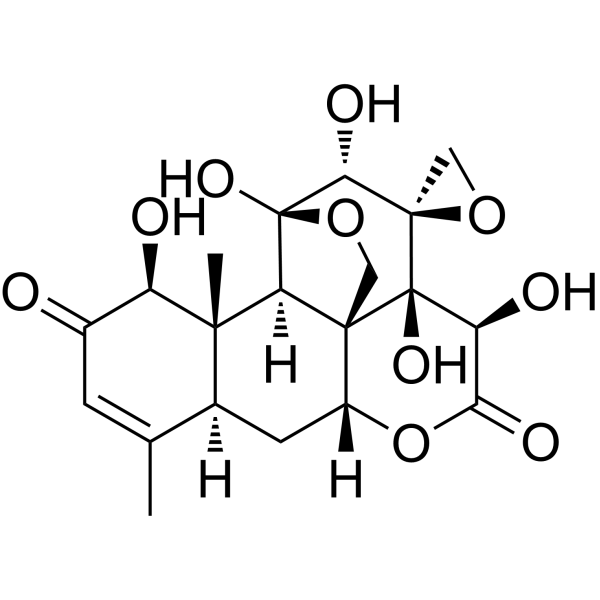
Pasakbumin B
CAS No. 138809-10-6
Pasakbumin B( 13-alpha-(21)-Epoxyeurycomanone )
Catalog No. M29210 CAS No. 138809-10-6
Pasakbumin B is a bioactive compound from Eurycoma longifolia Jack.
Purity : >98% (HPLC)
 COA
COA
 Datasheet
Datasheet
 HNMR
HNMR
 HPLC
HPLC
 MSDS
MSDS
 Handing Instructions
Handing Instructions
| Size | Price / USD | Stock | Quantity |
| 5MG | 282 | Get Quote |


|
| 10MG | 421 | Get Quote |


|
| 25MG | 678 | Get Quote |


|
| 50MG | 888 | Get Quote |


|
| 100MG | Get Quote | Get Quote |


|
| 200MG | Get Quote | Get Quote |


|
| 500MG | Get Quote | Get Quote |


|
| 1G | Get Quote | Get Quote |


|
Biological Information
-
Product NamePasakbumin B
-
NoteResearch use only, not for human use.
-
Brief DescriptionPasakbumin B is a bioactive compound from Eurycoma longifolia Jack.
-
DescriptionPasakbumin B is a bioactive compound from Eurycoma longifolia Jack.(In Vitro):Pasakbumin B is from Eurycoma longifolia Jack, an herbal medicinal plant of South-East Asian origin, popularly recognized as 'Tongkat Ali.' The plant parts have been traditionally used for its antimalarial, aphrodisiac, anti-diabetic, antimicrobial and anti-pyretic activities, which have also been proved scientifically.
-
In Vitro——
-
In Vivo——
-
Synonyms13-alpha-(21)-Epoxyeurycomanone
-
PathwayOthers
-
TargetOther Targets
-
Recptor——
-
Research Area——
-
Indication——
Chemical Information
-
CAS Number138809-10-6
-
Formula Weight424.402
-
Molecular FormulaC20H24O10
-
Purity>98% (HPLC)
-
SolubilityIn Vitro:?DMSO : 100 mg/mL (235.63 mM)
-
SMILES[H][C@]12[C@@]3(O)OC[C@@]11[C@@]([H])(C[C@@]4([H])C(C)=CC(=O)[C@@H](O)[C@]24C)OC(=O)[C@H](O)[C@@]1(O)[C@@]1(CO1)[C@H]3O
-
Chemical Name——
Shipping & Storage Information
-
Storage(-20℃)
-
ShippingWith Ice Pack
-
Stability≥ 2 years
Reference
molnova catalog



related products
-
TC-AQP1-1
TC-AQP1-1 is a blocker of the aquaporin 1 channel identified by virtual screening and inhibits water flux through hAQP1 in Xenopus laevis oocyte swelling assays at low micromolar concentrations.
-
Tetramethylammonium
Tetramethylammonium ion has limited toxicity of dermal exposure, but fatal effects can be introduced by pre-treatment with hydroxide ion.
-
Brilliant Black BN
Brilliant black BN (E151) is an azo dye and a food colorant. It is a promising antiviral agent against EV71 infection via inhibiting the interaction between EV71 and its cellular uncoating factor cyclophilin A.



 Cart
Cart
 sales@molnova.com
sales@molnova.com


